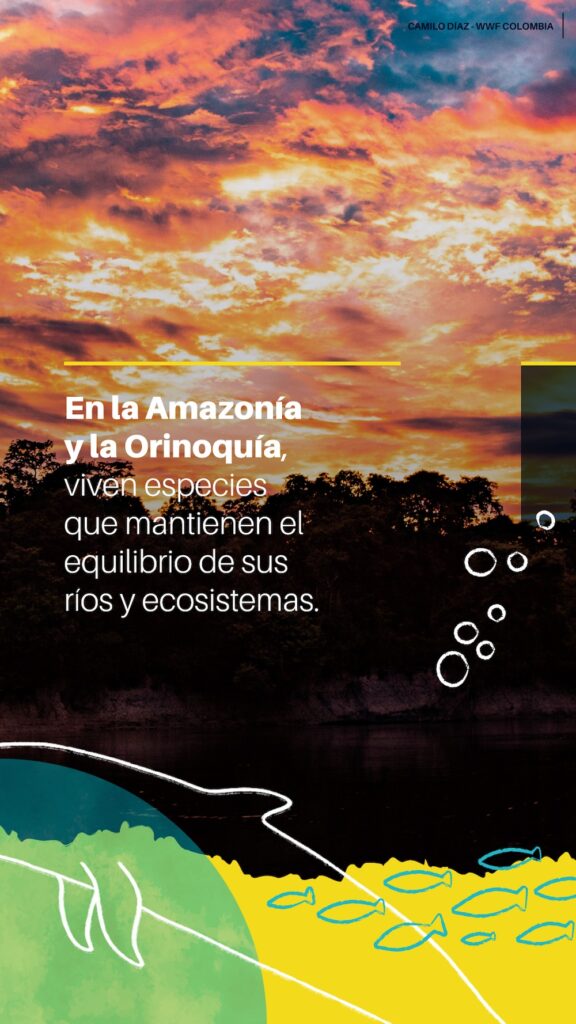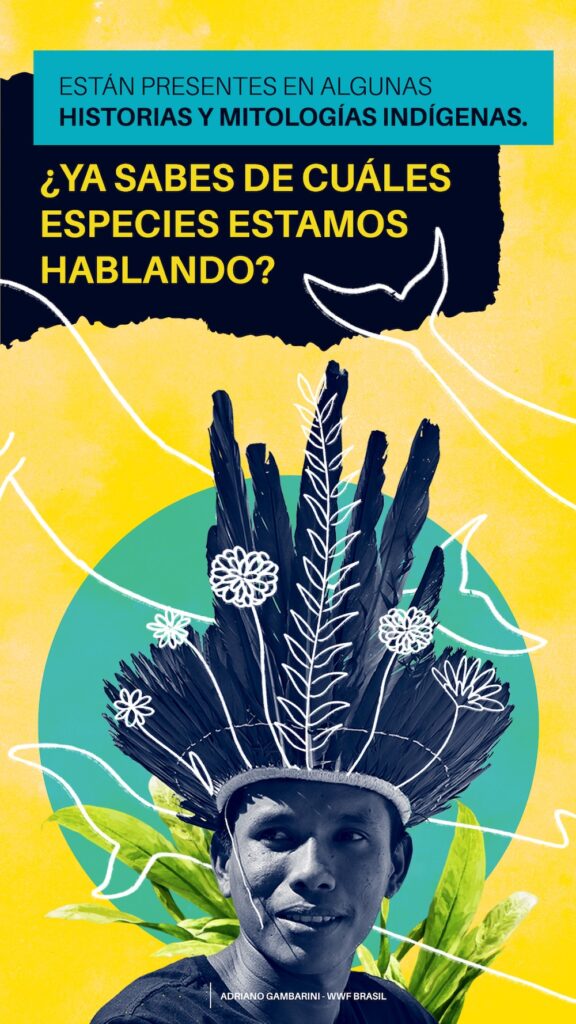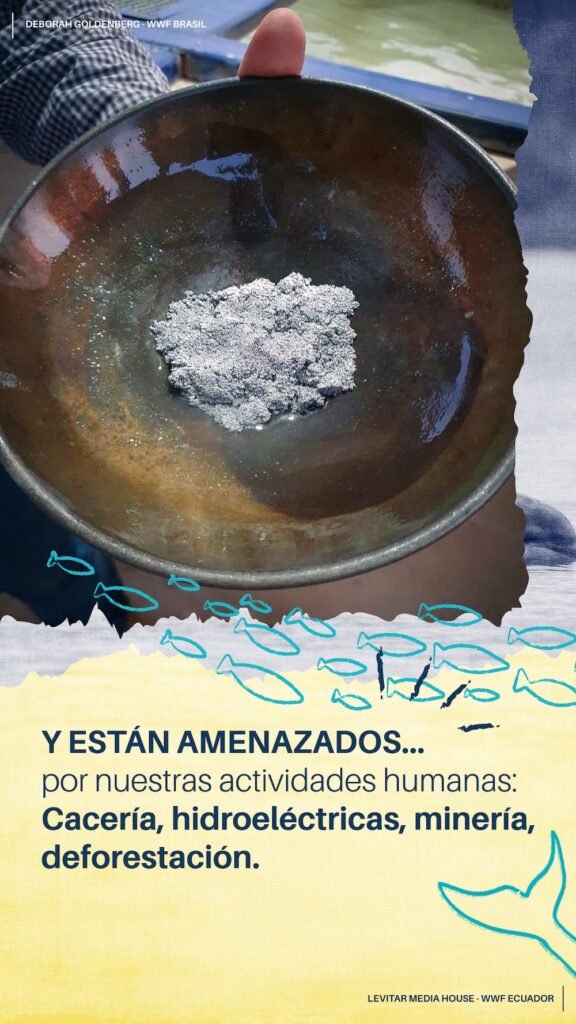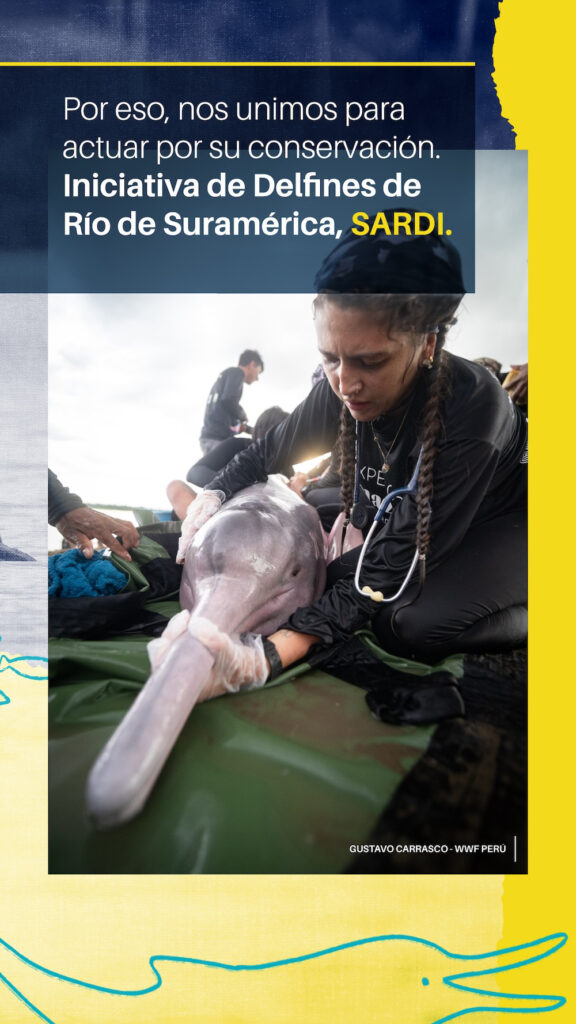Who are river dolphins?
SOUTH AMERICAN RIVER DOLPHIN INITIATIVE SARDI
Aquatic wonders adapted to rivers
River dolphins, known for their agility and playful behavior, are species fully adapted to life in river environments. Unlike their marine relatives, river dolphins have more flexible bodies and articulated necks that allow them to deftly maneuver between roots and submerged trees in rivers. Their coloration varies from pink to gray depending on the species and habitat, making them not only unique in appearance, but also fascinating to study. These dolphins feed primarily on fish and small invertebrates, using their sophisticated sonar to navigate and hunt in the murky waters of rivers.
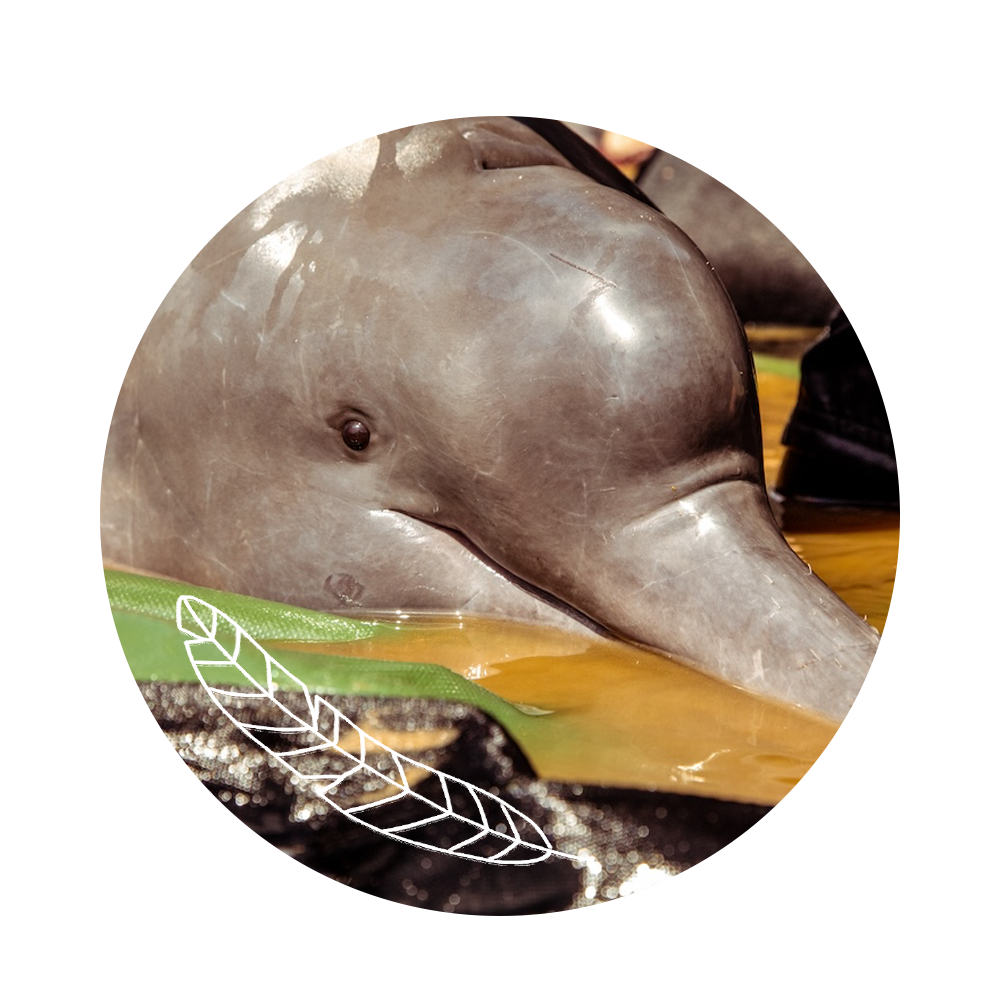
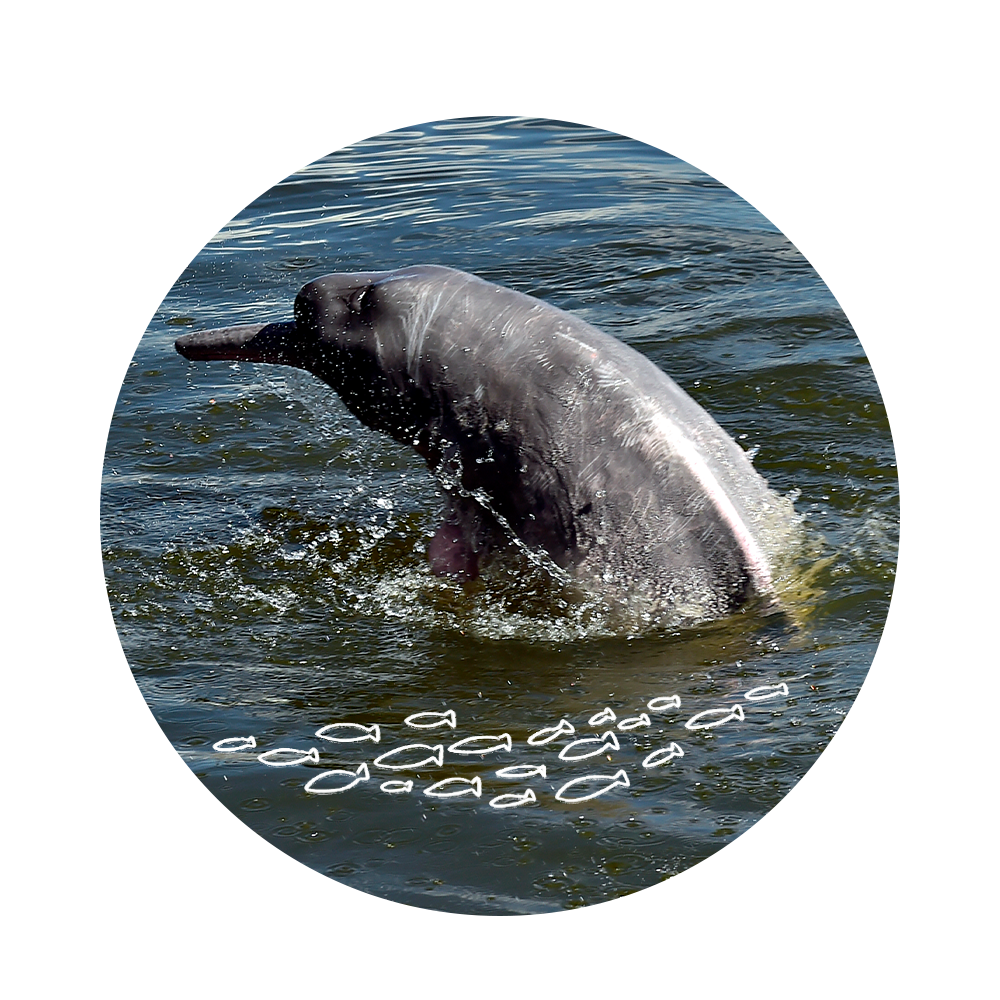
Ambassadors of river ecosystems
River dolphins are considered indicator species of the health of aquatic ecosystems. Their presence or absence can signal the overall condition of rivers, as they require clean waters and well-maintained systems to survive. Additionally, these mammals have a significant cultural role in many riverine communities. They are seen as symbols of the health and fertility of the waters and, in many local cultures, there are legends and myths surrounding them, reflecting the deep connection between these dolphins and the human communities that share their habitats. The protection of river dolphins is crucial not only to preserve biodiversity but also to maintain the cultural and ecological integrity of river regions.
Discover more about river dolphins
